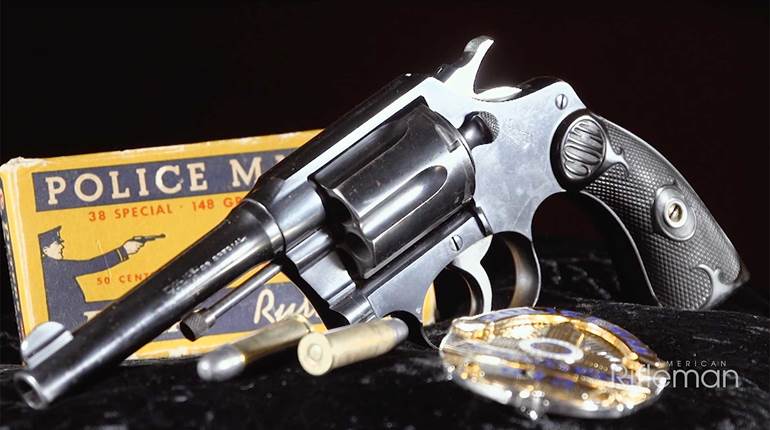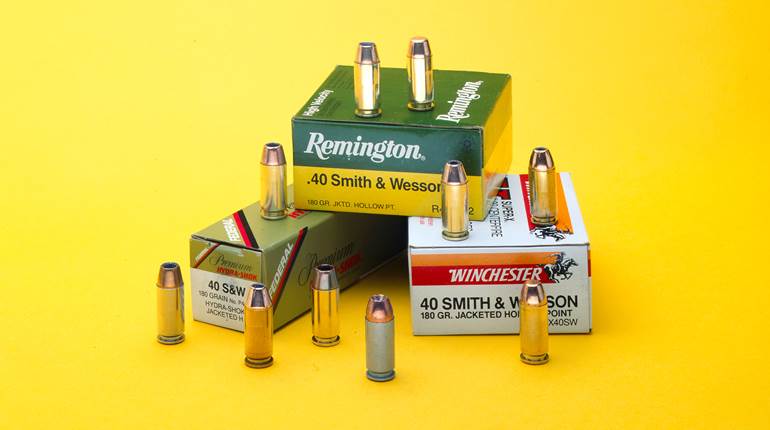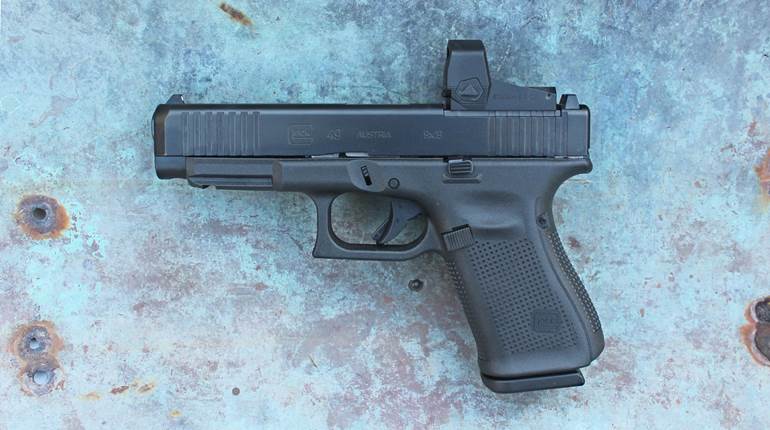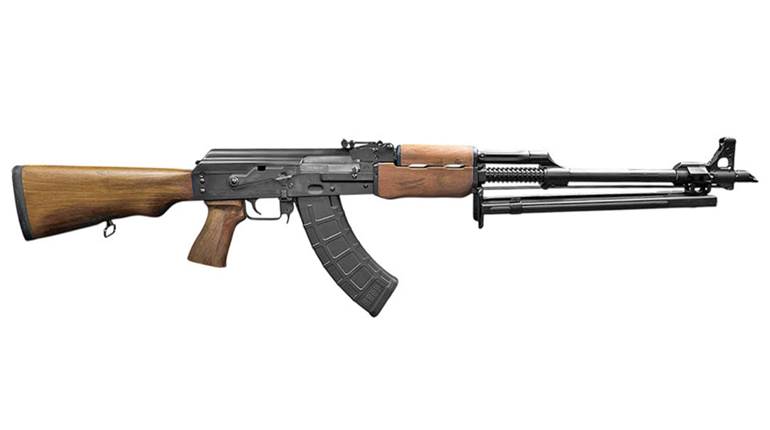
For the better part of 35 years, I have made a living as a gun writer. I count myself fortunate for having done so. For the most part, I’ve written about pistols and revolvers, with the results reported in several different gun magazines. In the process of firing many different handguns and many more kinds of handgun ammunition, I have developed some procedures and mad some observations about handgun evaluations. In the hopes that my experiences may be of assistance to American Rifleman readers, I havesummarized them in this article. My way of doing things is not the only way they could possibly be done, but I believe my system is an even and consistent way to evaluate the potential of a handgun.
Evaluate Or Test?
Note that I use the term "evaluate" and not ''test." An old friend and my former editor, Tom Siatos, once gently corrected me when I used the latter term. Tom's point was clear—test is a word heady with scientific overtones. It implies a procedure with results that could only be accomplished in a well-equipped laboratory. For our purposes, it is really a matter of evaluating the gun's suitability for a particular role. It is also important to note that handguns demonstrate no potential whatsoever without firing them with suitable high-quality ammunition. Like horse and carriage, the fortunes and reputation of gun and ammo are inextricably interwoven.
Breaking It In
Expect the most definitive results when the gun is broken in. The number of shots required to break in a handgun varies with the make and style.
Revolvers are a little easier to break in than semi-automatics, and it's not unusual to find a top-quality revolver shooting its best after only a few dozen shots. Semi-automatics require a little more use before all of the moving parts and contact surfaces have their rough edges worn off and somewhat burnished. An expensive and tightly fitted 1911 Al-style pistol needs several hundred rounds through it before it's delivering top accuracy and reliability. And remember that lubrication can be extremely important in the breaking-in process.
While you seldom have much of a problem with the functional reliability of a revolver, semi-automatics are often a problem. For some uses, such as personal defense or top-level competition, you cannot tolerate any lack of functional reliability. But you need to be realistic in the evaluation process and give the gun and ammo the benefit of the doubt. Recurrent malfunctions in an automatic pistol that disappear with break-in are sometimes acceptable.
Shoot—A Lot
Evaluating a handgun means shooting it a lot. The shooting needs to be done under: controlled circumstances and with a view toward determining three things. They are (1) the gun's pure mechanical accuracy, (2) its functional reliability and what I refer to as (3) the gun's "shootability." The first two factors are pretty straightforward, but the shootability is a subjective matter of balance, heft, recoil, sights, trigger and other ergonomic factors that contribute to the gun's ease of use in your hands for a selected role.
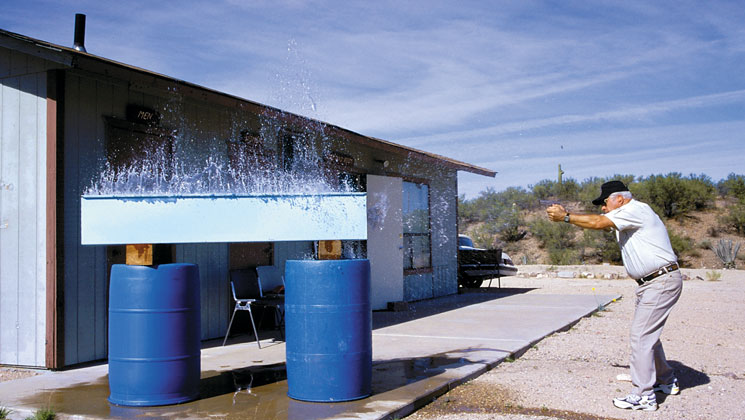
You can't determine a great deal about your pistol's accuracy unless you shoot a lot of rounds. That's the reason American Rifleman's protocol calls for five, consecutive, five-shot groups. It's also important to understand what happens in revolvers. You can view your wheelgun as a six-shot repeater or as six single-shots. If you are using the gun as a hunting arm, it makes sense to shoot groups from each individual chamber, thereby determining the best of the six for use as the first shot. But if you use the gun as a repeater, you need to determine which chamber(s) if any, shoots a little away from the rest. Be prepared for surprises. I have found guns in which the best single chamber actually shot away from the other five.
Also, use several different loads in your shooting evaluations, I have an interesting page of data in one of my range notebooks. I fired a new S&W 686 Plus with 17 different kinds of .357 Mag. ammunition, ranging from 125 to 180 grs. in bullet weight. It was a superb gun, averaging about 1.6" for 14 shots (twice around a seven-shot cylinder). But when I excluded the 125-gr. loads from the computation, the overall average group size dropped to less than one inch. The more you shoot, the more you find out,
The Ransom Rest
I believe the best accuracy evaluations come through the use of a Ransom Rest. The late Chuck Ransom did a big favor for all devoted handgunners when he designed and produced the machine rest that bears his name. The cast steel contrivance holds a handgun in rubber-faced inserts on a movable rocker arm that is free to recoil upward as the shooter fires the gun with a mechanical trigger/finger arrangement. The shooter returns the arm to a zero or battery position and fires again. With everything properly set up and adjusted, the arm that holds the gun goes back to exactly the same spot and the next shot will be delivered exactly like the former. That continues until a complete shot group is fired on the target. But the Ransom Rest is not infallible, and incorrect manipulation can skew accuracy results all over the place. You have to use the correct inserts for the gun in question, and the gun must be settled into them properly
This latter operation usually takes a few shots. After mounting a gun in the inserts, I align it so the sights are pointed rather low on the target, usually placed at 25 yards, and fire the first shot. With very rare exceptions, the next shot strikes a few inches higher on the target and the next one higher yet. Eventually the gun settles into the rubber grip inserts and the on-target result is a rounded group. When the vertical stringing comes to a halt, the gun is settled.
It's also important that the Ransom Rest be mounted properly I use two different ranges where I have built concrete shooting benches with thick table-tops mounted atop cinder block legs. The Random Rest is securely bolted to a thick wooden plank, which goes on a portable tabletop made of laminated plywood 3" thick. The entire arrangement is then C-clamped to the concrete table. For all practical purposes, the arrangement is rigid.
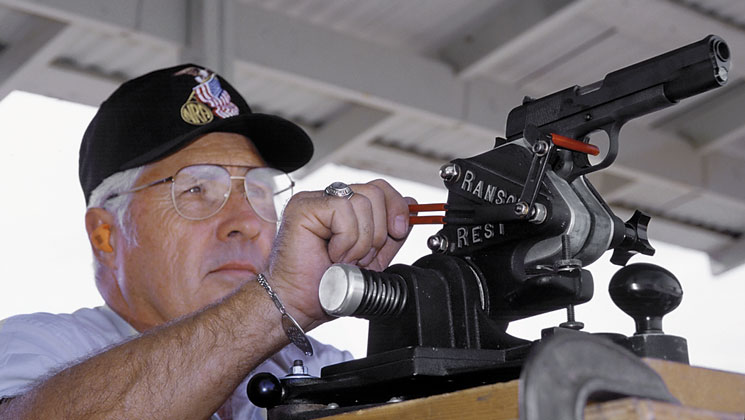
One of the subtle advantages of using the Ransom Rest is what you see happening when you remove the human need to aim the gun. Probably 80 percent of all new semi-automatic pistols have the so-called "Automatic Syndrome," or first-shot flyer. As you begin shooting a semi-auto, the first shot goes into the firing chamber when you release the slide, but subsequent shots are automatically loaded as the gun's action cycles. Different slide velocities are at work and the pistol's moving parts settle into two different locations or relationships. More often than not, the first shot is a small distance away from the others. It is a natural phenomenon and can't be helped. Also, it will go away as the gun is thoroughly broken-in.
Gizmos and Targets
Shooting is a bit more difficult when you can't use the Ransom Rest—as for example when the rest or proper inserts are not available. At that point, you must resort to manual shooting. I have found that my best results come from shooting the gun from a solid bench with some form of rest for the barrel, or better yet, the front of the frame. After fiddling with many different kinds of these gizmos, I have adopted the adjustable unit made by Midway or Winchester. It holds the gun well above the bench at a comfortable eye level and seems easier to use than most. You still have to work the trigger to get good results, but sitting down at a steady table or bench with the gun solidly braced takes much of the wobble out of manual shooting.
The main difficulty with manual shooting is aiming, and you are best off using a prominent aiming point for this kind of work. After experimenting with a lot of different kinds of targets, I designed one that I believe works better than most. It is the "OG" (for "Orange Grid'') and it's made by the ALCO Target Company of Duarte, Calif. Printed on typical tagboard, the target features a 1" grid background with a centered 3'A" bull printed in vivid orange. Trace a 1/4" black key line around the bull, which makes it stand out from the background. It is fairly easy to align the front and rear sights as normal, then place the orange meatball right on top of the aligned sights.
The principles of marksmanship still apply at this point, and you will find follow-through to be very important.
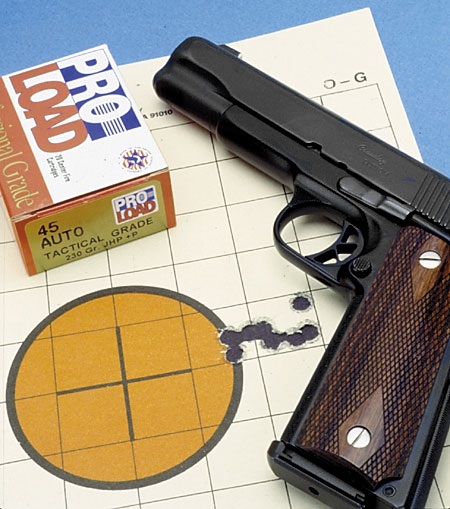
Shootability
Evaluating for shootability means that you file the gun extensively in whatever style of shooting is consistent with the gun's intended role. If you are looking for a strong, single-action .44 Mag. to use as a defense gun in big bear country don't do all of your evaluation shooting with mild-recoiling .44 Spl. ammo. And don't wring it out at 100 yds. from the bench, as this is hardly defensive shooting. Try the gun in some fast, close-range shooting drills with full-power ammunition to get a better feel for how it handles.
More shooters buy defensive handguns every year and need some way of evaluating them. My suggestion here is to develop your own evaluation protocol. Try something such as three silhouettes at 7 to 10 yards. Use one of the little timers that begin with a loud beeping noise. Fire two shots in each of the three targets as fast as you can aim and shoot. The idea is to keep your shots centered and deliver them as quickly as possible. Doing this simple exercise with a variety of your own or your friend's guns will give you a personal yardstick for shootability when a new gun comes along.
Terminal Ballistics
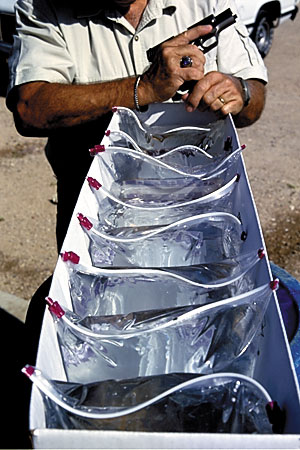
Finally, I would like to mention one other aspect of handgun and ammunition evaluation. It is terminal ballistic performance, which is best measured in properly prepared and stored ordnance gelatin. That material is seldom seen outside of the laboratory and is tedious and expensive to prepare. Several substitutes (clay, wet newsprint, sand, etc.) have been used, but haven't been quantified against the real gelatin. Dr. Martin Fackler made extensive use of gelatin in his studies at the Army Wound Ballistics Laboratory. I have found that plain water in a recovery tank can approximate gelatin results. I had a 6' long tank built, which features a hole in the front end that I cover with a square of sheet rubber. I shoot through the rubber and into a horizontal column of water in plastic bags. The bullets penetrate and expand as in gelatin, although they will go farther. The ratio between water penetration and gelatin penetration is 3.5:1. What a bullet will do in 35" of water, it will also do in approximately 10" of gelatin. The system is interesting, but it is not definitive. It's best used to compare particular bullets while evaluating them.
Conclusion
Evaluating guns is clearly a mix of hard science and human subjectivity. Reliability is crucial in any shooting activity/but beyond that, things get gray pretty fast. What constitutes "acceptable" accuracy is dependent upon the chosen activity as well as the ability of the shooter. Ergonomics, weight, felt recoil and even the complexity of a particular gun's manual of arms affect different shooters differently. A fair evaluation must involve a lot of shooting, which should include practical trials that simulate the gun being used in its intended role. Ultimately, the best solution may be to set your own standards for each par¬ticular type of handgun and then to make comparisons only between guns of the same type. Doing so should help you determine which gun is the right tool for you and for the job at hand.
Some semi-auto pistols suffer from "Automatic Syndrome." This is when the first shot strikes away from the rest of the group. It will often diminish as the gun is broken in.



























